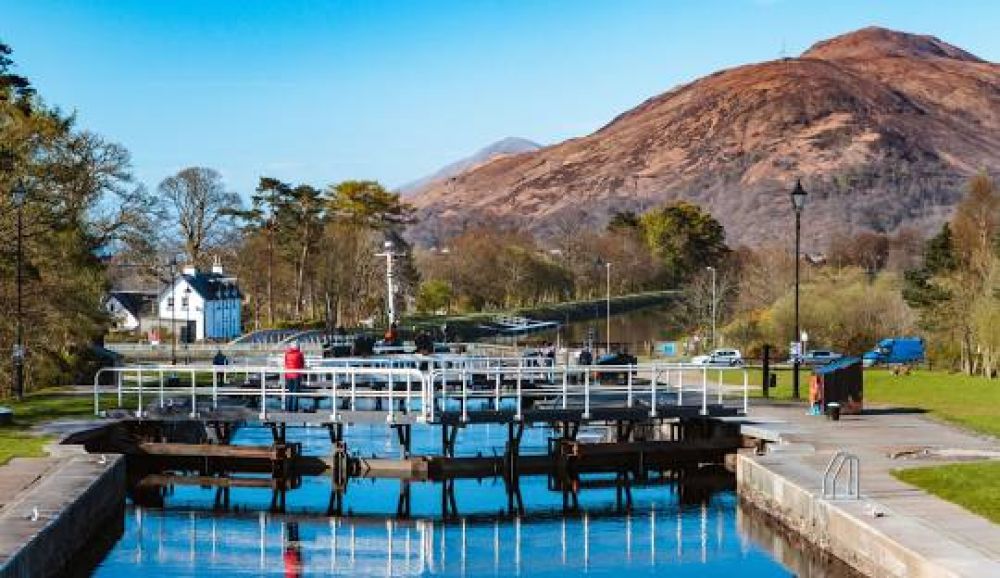

The Caledonian Canal is an enduring monument to Scotland's ambitious engineering efforts of the early 19th century. The canal was conceived to provide a navigable route, connecting the east coast at Inverness with the west coast at Corpach near Fort William. The visionary behind this grand design was the renowned engineer Thomas Telford, who embarked on this vast project with the aim of boosting the local economy by facilitating easier movement of goods and vessels. In 1822, after two decades of construction, the Caledonian Canal officially opened, carving through the Great Glen along ancient lochs, including Loch Ness, Loch Oich, and Loch Lochy.
Tourism along the Caledonian Canal has its roots in the Victorian era, when the concept of leisure travel was beginning to take hold among the affluent classes. The stunning scenery, coupled with the novelty of canal navigation, attracted curious tourists and adventurers. The journey through the canal offered a unique perspective on the Highlands' natural beauty, which was much celebrated in poetry and literature of the time, thereby promoting the region's romantic appeal.
Today, the Caledonian Canal is a hub for a diverse range of tourist activities that reflect the changing tastes and preferences of modern visitors. One of the latest trends is the rise of outdoor adventures and eco-tourism. Travelers from around the world come to experience activities such as kayaking, canoeing, and stand-up paddleboarding on the canal's calm waters. Additionally, the surrounding paths provide excellent opportunities for cycling and walking holidays, for both novices and experienced trekkers.
Luxury tourism has also found a home on the Caledonian Canal, with high-end cruises offering an opulent way to traverse this historic waterway. Visitors can enjoy the majestic highland backdrop in comfort and style, with fine dining and accommodation on board. Furthermore, the canal's proximity to Inverness has made it a central component in the city's tourism offer, bringing in considerable revenue and marking it as a must-visit for any Highland itinerary.
In response to the delicate ecosystem of the Caledonian Canal and its surroundings, there has been a concerted effort from local authorities and conservation groups to balance tourism with sustainability. The canal itself is a Scheduled Ancient Monument, and a great deal of attention is paid to preserving its banks, structures, and adjoining landscapes. Future tourism initiatives continue to prioritize eco-friendly practices, ensuring that the Caledonian Canal remains a treasured landmark for generations to come.
The influence of the Caledonian Canal on Scottish tourism mirrors the country's journey from the Industrial Revolution to the present day, embracing change while honoring tradition. For those looking to immerse themselves in Scotland's storied past and vibrant present, a voyage on the Caledonian Canal is truly a journey through the heart of the Highlands.